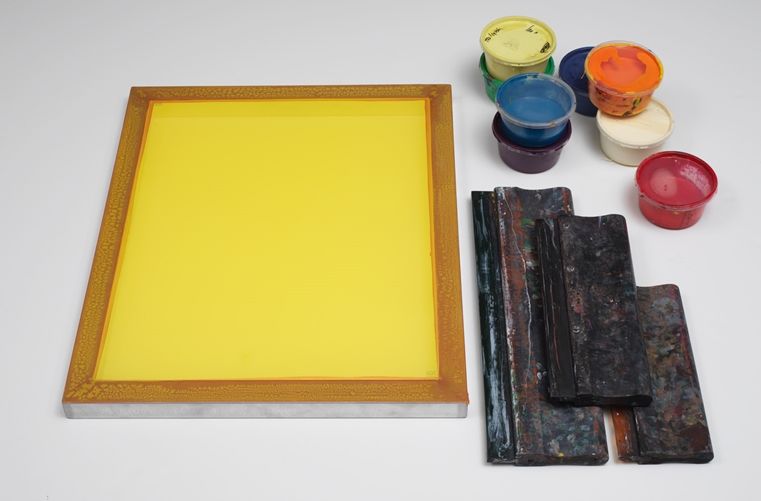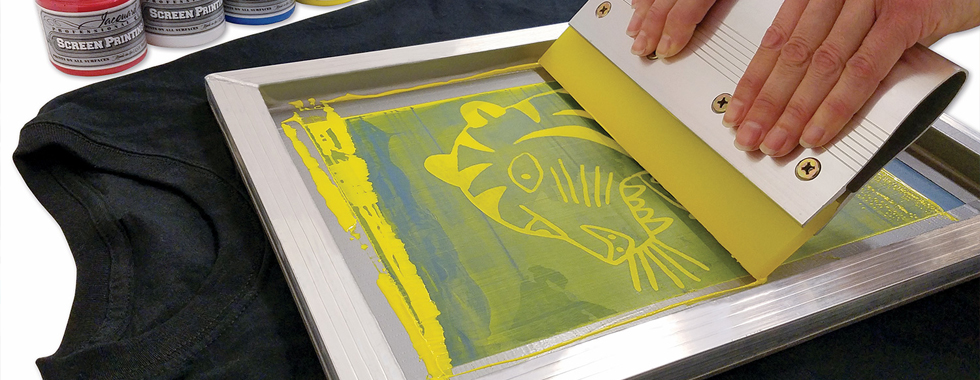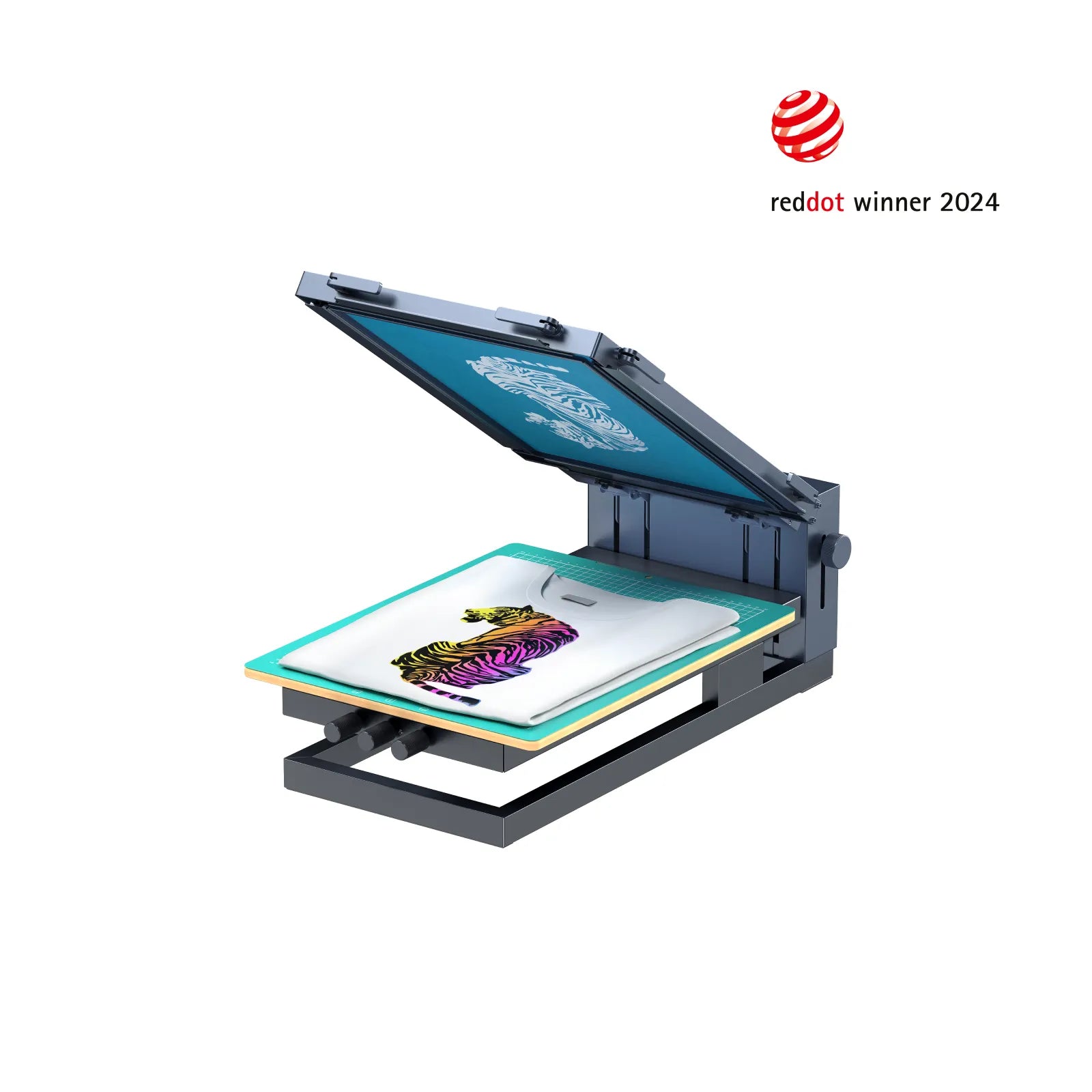ChatGPT said: How to get quick answers through 10:9 Design contact for your next order
The Crucial Guide to Recognizing Screen Printing and Its Versatile Uses
Screen printing has an abundant background that dates back to ancient times, advancing into an innovative technique utilized across different sectors today. This guide checks out the intricacies of the screen printing process, outlining its applications in home, advertising and marketing, and style design - 10:9 Design Company. Comprehending these basics can open up innovative possibility for both artistic and commercial projects. The adhering to sections will disclose vital ideas and methods to enhance one's screen printing ventures
The Background of Screen Printing
Screen printing has origins that map back centuries, its advancement mirrors the technological and imaginative innovations of numerous societies. Coming from ancient China, the technique was originally utilized for embellishing fabrics and later infect Japan, where it became integral to Ukiyo-e woodblock printing. The method changed to Europe in the 18th century, where it gained appeal among craftsmens and business printers. The innovation of image solution in the 20th century transformed screen printing, permitting even more detailed layouts and better performance. Musicians like Andy Warhol further pushed its popularity, making use of the medium to develop renowned works that blended commercialism and fine art. By the late 20th century, screen printing had actually established itself as a functional technique, utilized in vogue, marketing, and great art. Today, it continues to progress, integrating digital technology and increasing its applications throughout various industries.
The Screen Printing Process Explained
Screen printing transforms creative visions right into substantial designs through a collection of specific actions. At first, a picture is produced and after that transferred onto a screen, normally made of fine mesh fabric extended over a frame. A light-sensitive solution is applied to the screen, which is exposed to light, setting in locations not covered by the photo. After rinsing the unhardened emulsion, a pattern is created.
Next off, the screen is placed over the substratum, whether it be fabric, paper, or an additional product. Ink is after that pressed via the open locations of the pattern utilizing a squeegee, transferring the layout onto the substrate listed below. This process can be repeated for several shades, needing separate screens for every color. Ultimately, the published thing is cured using warm to guarantee the ink sticks correctly, leading to a sturdy, lively style all set for usage.
Kinds Of Screen Printing Techniques

Additionally, specialty strategies, such as discharge screen printing, get rid of color from the material to produce softer prints, while foil screen printing uses metal foil to achieve a get more info shiny coating (10:9 Design Screen Printing Texas). Each method provides distinct attributes, accommodating various creative demands and production scales, ultimately increasing the opportunities within the screen printing domain name
Applications of Screen Printing in Numerous Industries

In addition, the signage and advertising markets make use of screen printing for creating distinctive displays and banners. This method permits vibrant shades and intricate designs that capture focus. In electronic devices, screen printing is used for using conductive inks to circuit card, important for component connections. The home design industry welcomes screen printing to generate unique layouts on textiles and wall surface art. Generally, screen printing acts as a vital tool throughout varied areas, improving products with individualized and aesthetically appealing graphics.
Tips for Successful Screen Printing Projects
While embarking on a screen printing project, cautious interest to information can significantly enhance the last result. First, choosing high-grade products is vital; this consists of the screen, inks, and substrates. Using proper mesh matters can affect ink deposition and information resolution. Preparation is equally essential; detailed cleaning of displays and correct direct exposure times ensure crisp prints.
Next, exact enrollment is vital for multi-color prints. Making use of positioning devices can assist accomplish specific layering. Furthermore, testing prints on scrap materials before production assists recognize prospective issues without wasting sources.

Regularly Asked Concerns
What Products Are Ideal for Screen Printing on Textile?
Cotton and polyester blends are suitable for screen printing on fabric as a result of their toughness and ink absorption. Additionally, specialized materials like silk or canvas can generate one-of-a-kind appearances and finishes, improving the overall style quality.
Exactly how Do I Tidy and Maintain Screen Printing Devices?
To clean up and maintain screen printing devices, one need to consistently wash displays with suitable solvents, evaluate squeegees for wear, oil moving components, and shop all products in a completely dry, dust-free environment to lengthen their lifespan.
What Are the Environmental Impacts of Screen Printing?
Screen printing can have considerable environmental influences, consisting of chemical waste from inks and solvents, water usage during cleaning procedures, and energy usage. Lasting techniques and environment-friendly products are crucial for reducing these unfavorable results.
Can Screen Printing Be Done at Home Efficiently?
Screen printing can be properly done at home with the right materials and techniques. Hobbyists can create high quality prints, though success depends upon their ability level, tools, and understanding of the process entailed.
What Are the Expenses Connected With Starting a Screen Printing Company?

Beginning a screen printing service includes costs for tools, products, and work area. Initial expenditures commonly range from a couple of hundred to a number of thousand dollars, relying on the range, quality of machinery, and wanted manufacturing capacity.
Screen printing has a rich history that dates back to ancient times, progressing into an innovative method made use of throughout various markets today. Another strategy, rotary screen printing, employs round screens, facilitating constant printing on fabric rolls, consequently enhancing performance for large-scale manufacturings. Additionally, specialized techniques, such as discharge screen printing, eliminate color from the fabric to develop softer prints, while aluminum foil screen printing applies metal foil to accomplish a glossy finish. In the style sector, screen printing is commonly made use of to create lively designs on clothing, making it possible for brands to showcase their special designs. Cotton and polyester blends are optimal for screen printing on textile due to their sturdiness and ink absorption.